Something that we covered in the video, but we did not show photos of in our original MikroTik RDS2216-2XG-4S+4XS-2XQ Review, was the two internal M.2 SATA SSD spaces. We thought we would at least show what we did with these. We installed two SiliconPower A55 SATA SSDs but found something interesting.
If you want to learn more about the MikroTik RDS2216, you can find that video here:
The Silicon Power A55 1TB SATA M.2 SSDs
It turns out that these days, finding SATA M.2 SSDs is not as easy as one might think. NVMe M.2 slots have been pervasive for 2-3 PCIe generations now and for 6+ generations of desktops and notebooks. As a result, the big players are focused on PCIe NVMe SSDs for their M.2 offerings. We ended up buying two Silicon Power A55 SSDs for around $52 each. We purchased these partly based on our 2020 Silicon Power 128GB A55 M.2 SATA SSD Review.
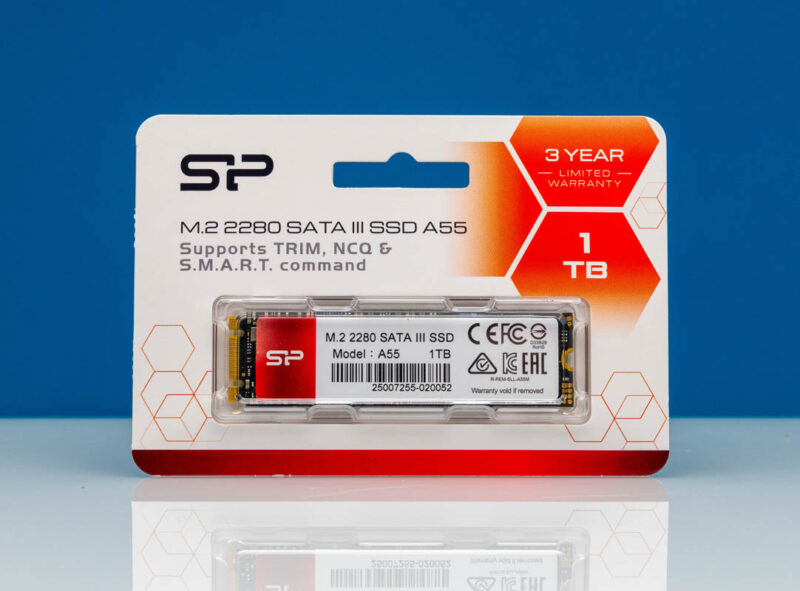
Here is the front of the new Silicon Power A55 SSD in 1TB:
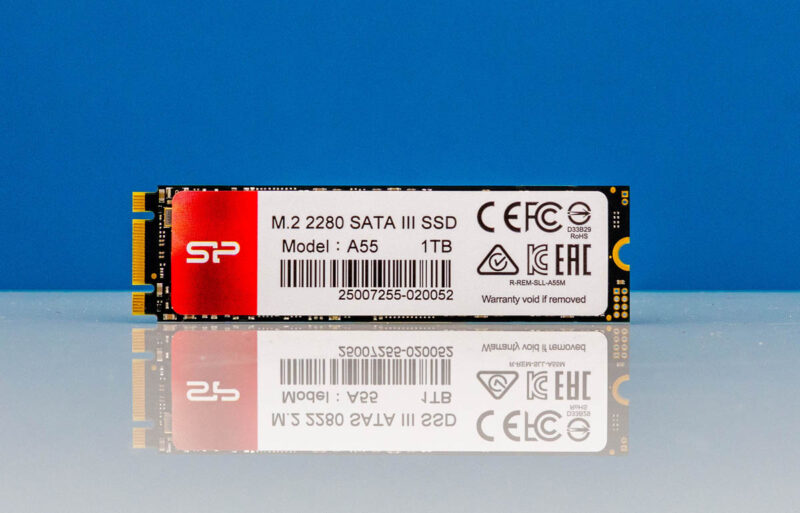
Here is the 2020 era 128GB drive for reference. As you can see, this was done in the pandemic era studio and given the April 2020 timeframe was a drive we reviewed because it was what we had on hand when loading docks shut down.
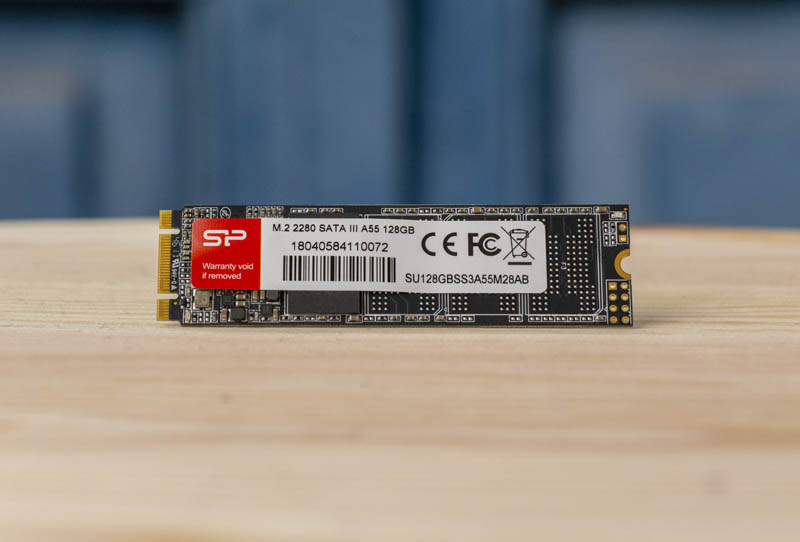
Just like with the old 128GB model, the new 1TB A55 has nothing of note on the rear.

As such, it was time to get the drives installed.
Installing two Internal SSDs in the MikroTik ROSE
In the photo below, the two M.2 slots can be seen on the left hand side.
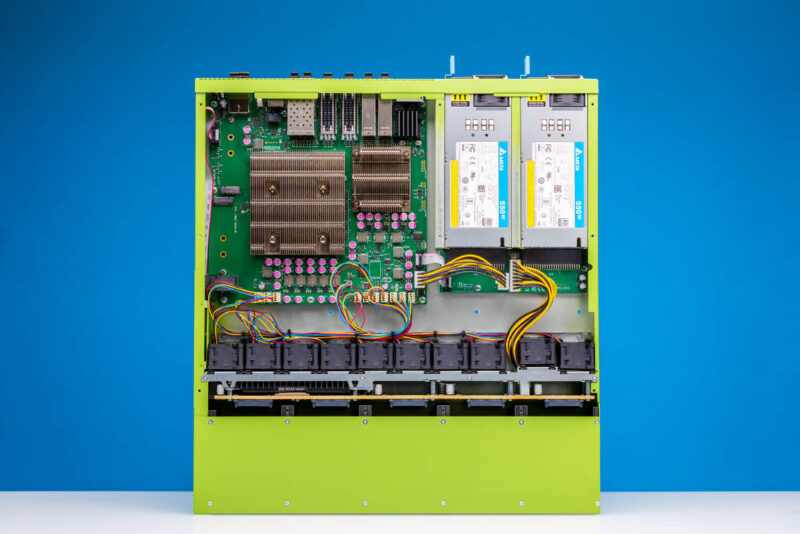
The slots are labeled as M.2 SATA #1 and #2. We are using 1TB A55’s here because we did not see the point in getting smaller drives given we were using 960GB NVMe SSDs.
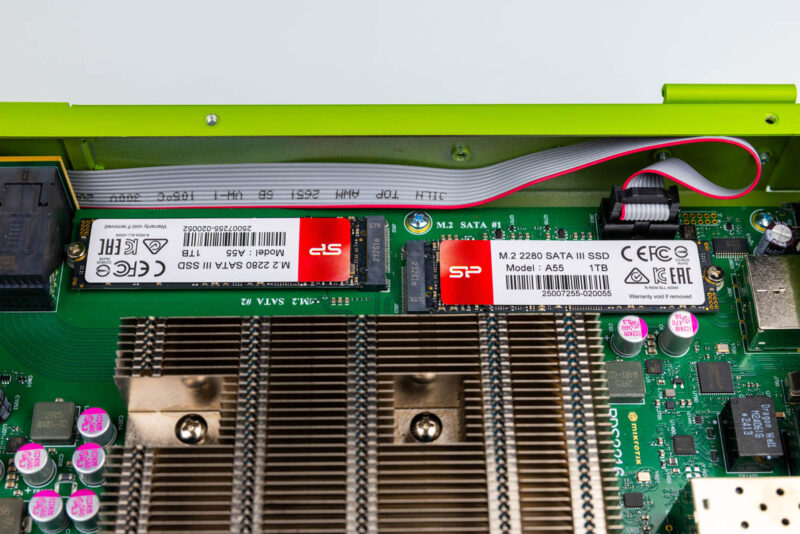
The interesting thing about these M.2 SSD slots is that they are marked as SATA 3.0. You can see this on the right side of the MikroTik RDS2216-2XG-4S+4XS-2XQ block diagram:
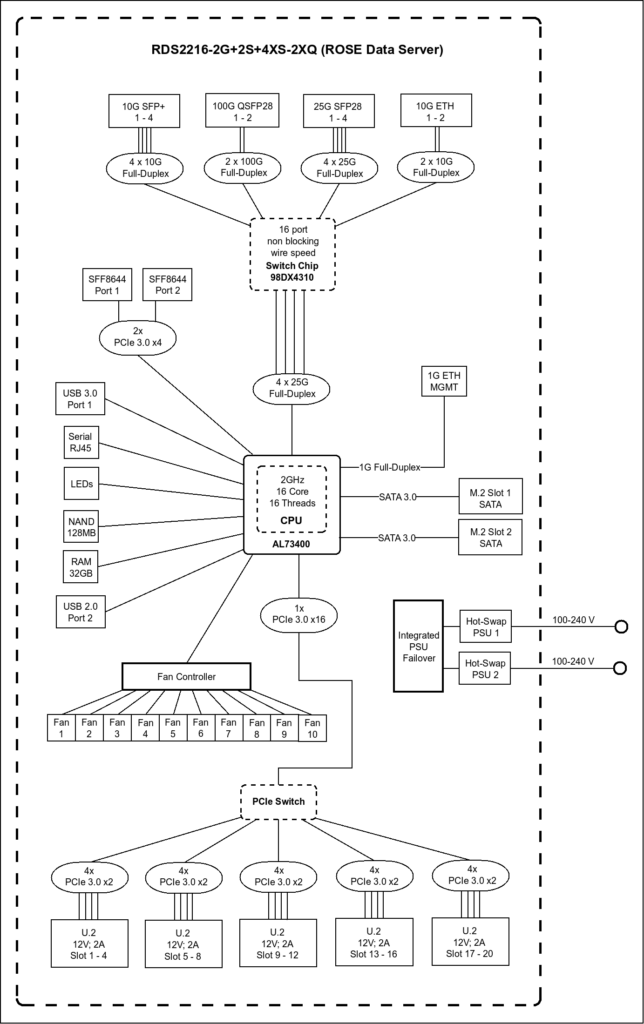
We showed these drives installed both on the video, and in the original review as you can see at the bottom of the drive list after the NVMe SSDs.
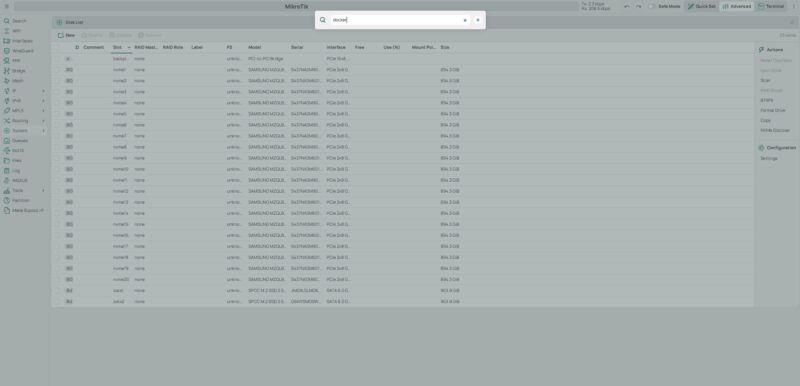
As drives in the system, you can use them in a RAID 1 array as an example.
Final Words
The SATA II interface in the MikroTik ROSE makes these best suited for low-performance storage. They would actually make good mirrored boot devices for many applications, especially if the ROSE had higher memory capacity. Maybe the most perplexing part is that MikroTik could have made an internal two drive PCIe Gen3 x4 M.2 array instead of the SFF-8644 external PCIe Gen3 ports. The internal bays are not easy to service, but if you just want to add storage, the A55’s are an option.
Where to Buy
If you want to check pricing on the Silicon Power A55 drives we used, here is an Amazon affiliate link.

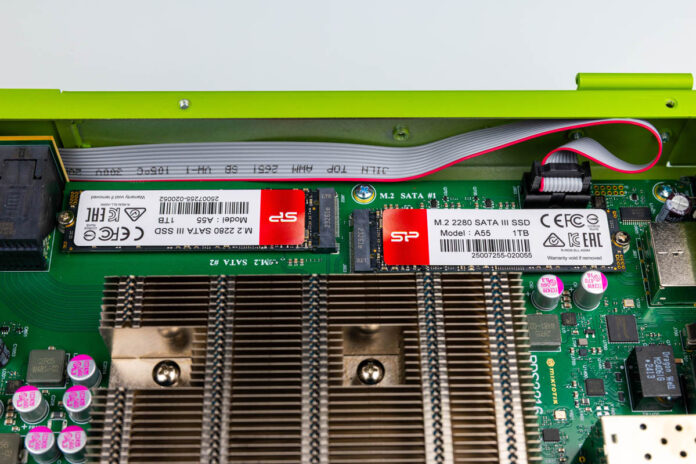

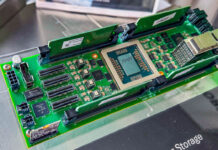
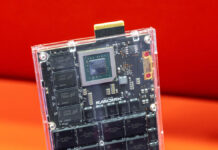
From your screen shot, it looks like the drives are running at SATA III speeds (6.0 Gbps), not SATA II. I think that is what’s being inferred from the block diagram as well – SATA 3.0 is the SATA version, not the speed. So, while not PCIe 3.0×1 speeds, it’s at least as fast as PCIe 2.0×1.
Agreed with Matthew – these drives are running at “SATA III 6.0Gbps”.
Just tested this and updated Rohit’s paragraph.